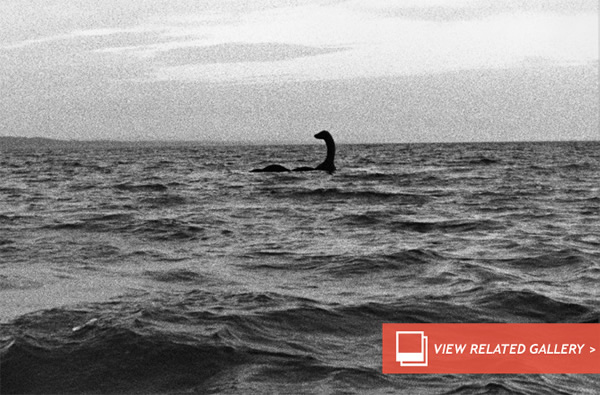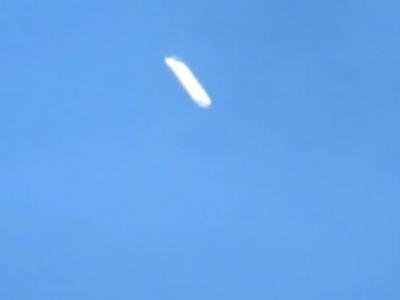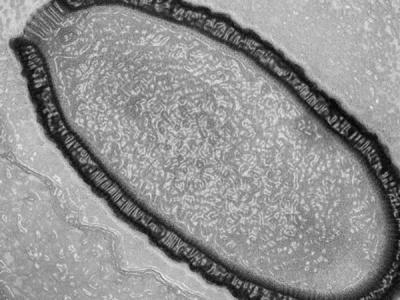Mysteries of Giant Fish, Loch Ness and Sea Serpents
The recent discovery of a monstrous fish off the Southern California coast has people buzzing. Photos of people holding a long piscine monster have spread around the Internet; there are of course many fake “big fish” photos floating around, but this one is not a Photoshop job, nor a hoax.
As a Discovery News story noted, “The staff and kids at a Southern California educational facility got quite a surprise when an 18-foot-long (5.5 meters) serpentlike sea creature washed up near the shore. While swimming in about 20 feet (5 meters) of water, dive instructor Jasmine Santana saw a large, silvery, slender figure on the sandy bottom on Sunday.” It took twenty-five people to pull the bony monster with reddish fins out of the water and pose it for photographs.
The creature — not a true sea monster but as close to one as most people will ever, or would ever, want to get to one — is a rare animal called an oarfish. Because they typically live deep in the ocean little is known about them, though scientists believe that they may grow to be twice as long as the most recent specimen.
Seeing the amazing photograph led many to wonder if these marine monsters might be mistaken for lake monsters or sea serpents. Could an oarfish (or, more realistically, a family of them) be responsible for sightings of Scotland’s famous Loch Ness monster over the years? It’s a tantalizing possibility, though scientifically unlikely.
For one thing, oarfish, whether small or huge, are not found in Loch Ness. Oarfish also tend live in temperate to tropical oceans waters, and most famous lake in the Scottish highlands would likely be too cold for them. Furthermore, oarfish are saltwater fish, while Ness — fed by several large rivers — is freshwater. Though some marine animals, such as several species of dolphins, are known to have adapted to freshwater, oarfish are not among them.
Sharks as Monsters
If not an oarfish, then what? Last year a researcher offered a new theory about what real animal might be behind some of the Loch Ness reports. Bruce Wright, a senior scientist at the Aleutian Pribilof Island Association, wrote an article suggesting that Nessie sightings may in fact be sleeper sharks, which can reach 20 feet long and weigh more than 4 tons. Wright theorized that the sharks might enter Ness through rivers connected to the ocean.
While Wright’s hypothesis is interesting, there are several problems with his theory, including that Pacific sleeper sharks, like oarfish, inhabit saltwater oceans. Furthermore despite Wright’s suggestion that the monsters’ shape and colors usually match that of sleeper sharks, in fact most descriptions of the unknown creatures in Loch Ness bear little resemblance to sleeper sharks. Instead many eyewitnesses suggest that the monster resembles a long-extinct, long-necked dinosaur-like marine reptile called the plesiosaur.
There are more plausible Nessie doppelgangers known to dwell in Loch Ness, including large fish like lamprey, European eel, pike, and sturgeon. Though the oarfish-as-Nessie theory is dubious, the oarfish-as-sea serpent theory is more plausible. For centuries sailors have told stories of seeing giant marine creatures, and oarfish are certainly among the real-life monsters (along with basking sharks, the now-extinct Steller’s sea cow, and other animals) that may explain sea serpent sightings.
Perhaps the best-known monster of the deep is the giant squid. The animals were known to exist because dead ones occasionally wash up on beaches. The largest giant squid specimen, found in New Zealand, was estimated to be sixty-five feet long. Like the oarfish, because the elusive giant squid live at great depths, no one had ever seen a living one in its environment until 2004 when two Japanese zoologists filmed a giant squid. The creature, about twenty-six feet long, was found nearly 3,000 feet below the surface.
As mysterious as the giant squid is, there is a still larger species of squid in the ocean. A 330-pound, sixteen-foot female colossal squid was caught in early April 2003 in the Ross Sea south of Wellington, New Zealand. It was dead when brought in and the remains are now in the New Zealand national museum. The body of the colossal squid is much bigger than its cousin the giant squid, which can weigh up to 2,000 pounds when fully grown.
Strange-looking dead things wash up on beaches and fuel monster reports with regularity. A bizarre, fanged monster dubbed the “San Diego Demonoid” appeared on a California beach in February 2012, sparking national news—until it was identified as a decomposing opossum. Though the ocean surely holds many secrets, until hard evidence surfaces truly unknown sea monsters will remain in the realm of fantasy and fiction.
Image: Undated alleged sighting of the Loch Ness Monster. Credit: Corbis(Oct 16, 2013 09:33 PM ET // by Benjamin Radford)












